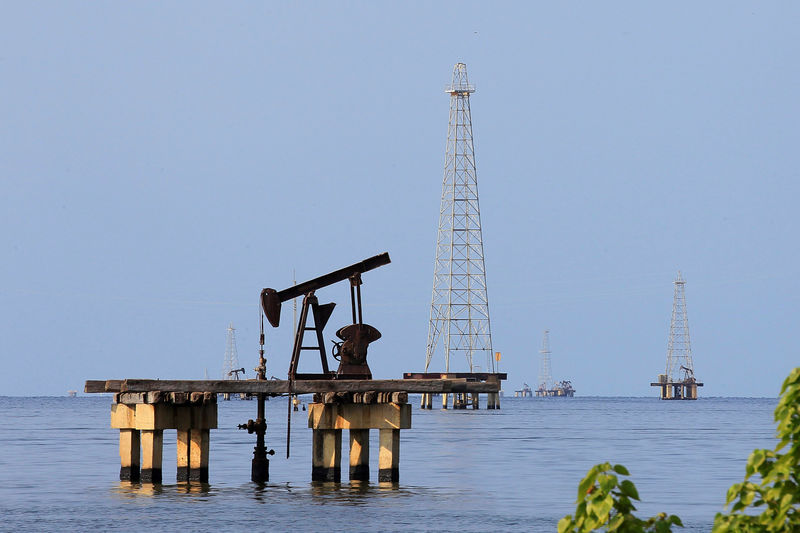By Ron Bousso
LONDON (Reuters) - Oil prices rose on Thursday after falling to near five-month lows in the previous session, but sentiment stayed weak due to rising U.S. supply and a stalling global economy.
Front-month Brent crude futures were at $61.23 a barrel at 1046 GMT, up 60 cents or 1%. U.S. West Texas Intermediate crude futures fetched $51.86, up 18 cents or 0.35%.
A day earlier the two benchmarks hit their lowest levels since mid-January at $59.45 and $50.60, respectively, amid a surge in U.S. crude inventories and record production.
At the same time, signs of slowing global economic activity have increased in recent months, fueled by trade tensions between the United States and China, the world's top two energy consumers.
"Ample supplies come on top of growth concerns related to the trade dispute escalation and put pressure on oil prices for the time being," Norbert Rücker, head of economics at investment bank Julius Baer, said in a note.
Despite Thursday's gains, oil markets are moving into bear territory as defined by a 20% fall from recent peaks reached in late April.
U.S. crude production rose to a record 12.4 million barrels per day (bpd) in the week to May 31, the Energy Information Administration (EIA) said on Wednesday, an increase of 1.63 million bpd since May 2018.
U.S. commercial crude inventories jumped by 6.8 million barrels in the same week, to 483.26 million barrels, their highest since July 2017.
Supply is rising outside the United States too. Output at Kazakhstan's Kashagan field reached a record 400,000 bpd this week after the completion of maintenance in May, industry sources told Reuters.
The Organization of the Petroleum Exporting Countries and some non-OPEC producers including Russia, an alliance known as OPEC+, are currently curbing output to support the market.
Weak growth is putting pressure on the outlook for demand.
Morgan Stanley (NYSE:MS) lowered its forecast for growth in oil demand for 2019 from 1.2 million bpd to 1.0 million bpd, subsequently cutting its Brent price forecast for the second half of 2019 to $65-$70 per barrel, from $75-$80.
"Demand is weakening much more rapidly than we had expected," Morgan Stanley analysts said in a note on Wednesday.

"We now estimate 2019 to be a year in which supply and demand broadly balance," the investment bank said.